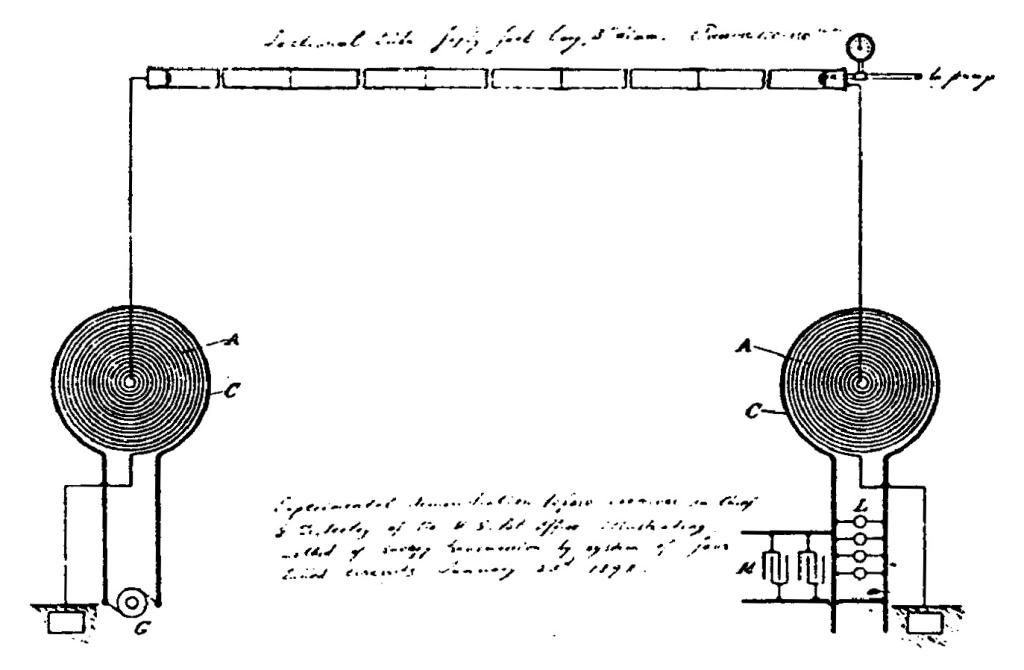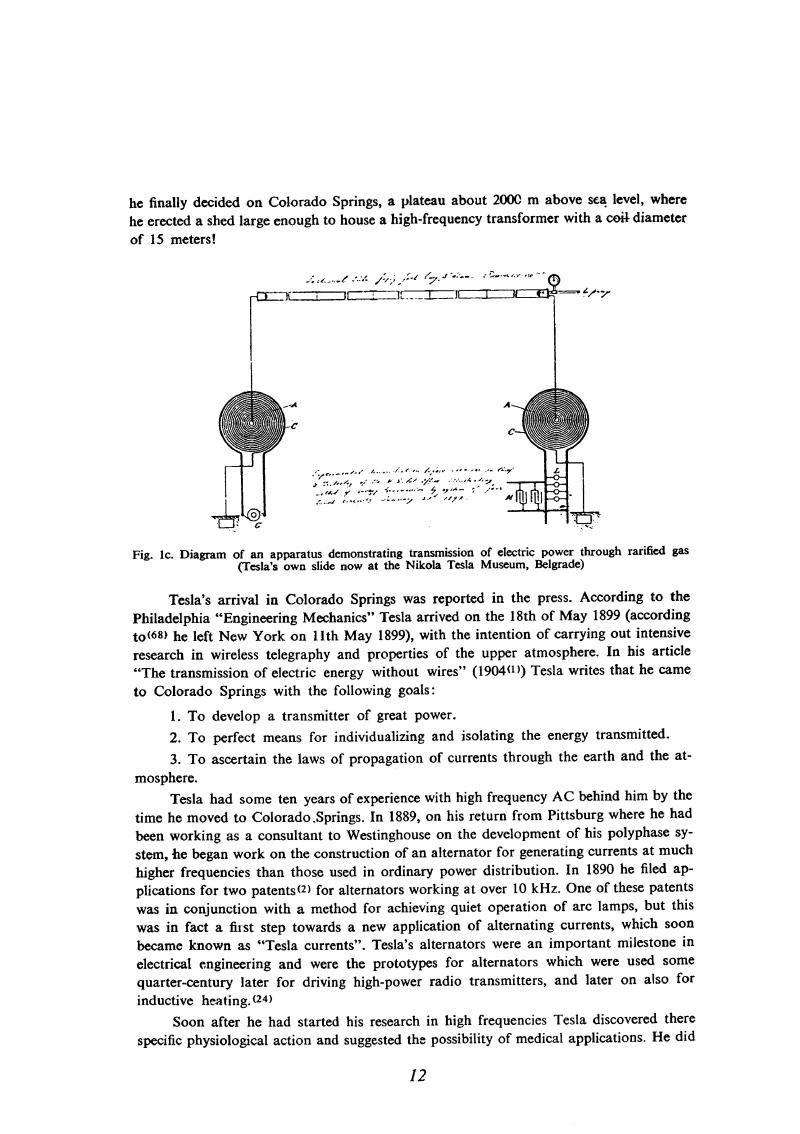
Nikola Tesla Books
he finally decided on Colorado Springs, a plateau about 2000 m above sea level, where he erected a shed large enough to house a high-frequency transformer with a coil diameter of 15 meters!
Tesla's arrival in Colorado Springs was reported in the press. According to the Philadelphia âEngineering Mechanicsâ Tesla arrived on the 18th of May 1899 (according to(68) he left New York on 11th May 1899), with the intention of carrying out intensive research in wireless telegraphy and properties of the upper atmosphere. In his article âThe transmission of electric energy without wiresâ (1904(1)) Tesla writes that he came to Colorado Springs with the following goals:
- To develop a transmitter of great power.
- To perfect means for individualizing and isolating the energy transmitted.
- To ascertain the laws of propagation of currents through the earth and the atmosphere.
Tesla had some ten years of experience with high frequency AC behind him by the time he moved to Colorado Springs. In 1889, on his return from Pittsburg where he had been working as a consultant to Westinghouse on the development of his polyphase system, he began work on the construction of an alternator for generating currents at much higher frequencies than those used in ordinary power distribution. In 1890 he filed applications for two patents(2) for alternators working at over 10 kHz. One of these patents was in conjunction with a method for achieving quiet operation of arc lamps, but this was in fact a first step towards a new application of alternating currents, which soon became known as âTesla currentsâ. Teslaâs alternators were an important milestone in electrical engineering and were the prototypes for alternators which were used some quarter-century later for driving high-power radio transmitters, and later on also for inductive heating.(24)
Soon after he had started his research in high frequencies Tesla discovered there specific physiological action and suggested the possibility of medical applications. He did
12
N. Tesla, LECTURES, PATENTS, ARTICLES, published by Nikola Tesla Museum, Belgrade, 1956 (from now on: Tesla), âThe transmission of electric energy without wiresâ, Electr. World and Eng. March 5, 1904, A-153.
Tesla: âAlternating electric current generatorâ, U. S. Patent 447 921, March 10, 1891, Appl. Nov. 15, 1890, P-129.
âMethod of operating arc lampsâ, U.S. Patent 447 920, March 10, 1891. Appl. Oct. 1, 1890, P-205.
ЦвеÑава Ð.Ð. ÐÐÐÐÐРТÐСÐÐ, изд. ÐаÑка, ÐенингÑад, 1974.
Testimony in behalf of Tesla, Interference No. 21,701, United States Patent Office, New York, 1902.


